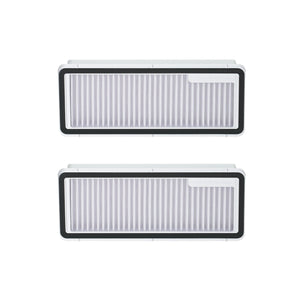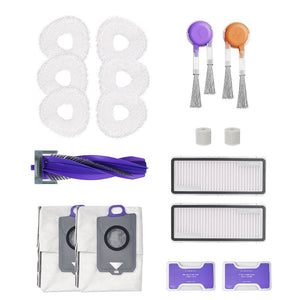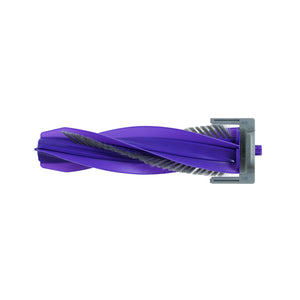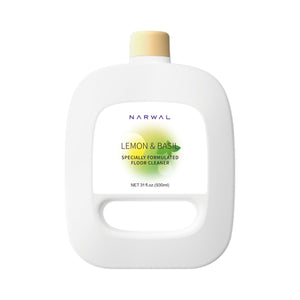Yes—robot vacuums can handle pet hair. With strong suction, smart navigation, and anti-tangle brushes, they give pet owners an easier way to keep floors clean every day. Studies show pet hair makes up over 60% of household debris, and manual vacuuming takes hours each week. A robot vacuum cuts that time to minutes, while keeping fur and dander under control.
In this guide, you’ll see how robot vacuums remove pet hair step by step. You’ll also learn what factors affect their performance. We explain why they’re a game-changer for busy pet homes. We’ll compare Narwal models with other top picks. We also highlight the best self-emptying systems. By the end, you’ll know which robot vacuum fits your pet. You’ll know which one matches your home. And you’ll know which one fits your lifestyle best.
How Do Robot Vacuums Handle Pet Hair Removal?
To fully understand how robot vacuums handle the task of pet hair removal, it’s important to break down the entire process—from detection to cleaning. Robot vacuums use a combination of suction, rotating brushes, and advanced sensors to clean your floors effectively. However, when it comes to pet hair, the process needs to be even more specialized to ensure that the vacuum can effectively deal with the hair without leaving any behind.
Here’s how it works:
Step 1: Detecting and Mapping the Environment
The first step in the cleaning process is for the robot vacuum to map out the space it needs to clean. A lot of current robot vacuums use sophisticated navigation technologies, including LiDAR, cameras, and infrared sensors. These sensors help the robot detect walls, furniture, and other obstacles, allowing it to plan the most efficient cleaning route.
For pet hair, the robot’s sensors can also detect areas that may have more debris, such as pet hair buildup, and focus on those spots. Some robots, like the Narwal Freo Z Ultra, use AI-powered mapping to create a detailed map of your home, ensuring that no area is left out.
[cta:narwal-freo-z-ultra-robot-vacuum-mop]
Step 2: Adjusting Suction and Cleaning Mode
Once the robot has mapped the room, it begins the cleaning process. However, to effectively remove pet hair, the vacuum needs to adjust its suction power based on the type of surface it is cleaning.
-
Hard Floors: On hard floors like tile or hardwood, robot vacuums can use a lighter suction setting, as pet hair tends to sit on the surface and is easier to pick up.
-
Carpets and Rugs: On carpeted floors, the vacuum increases suction power to ensure that the hair is lifted out of the fibers. Certain robot vacuums, like the Narwal Freo Z Ultra, adjust their suction power based on the floor type to ensure optimal cleaning performance.
Additionally, the suction power is crucial in lifting pet hair from various surfaces. Robot vacuums with high suction, like Narwal Freo Z Ultra (12,000Pa), are able to handle not only the fine, short pet hair but also longer and thicker hair that tends to stick deeper in carpets.
Step 3: Dislodging Pet Hair with Rotating Brushes
The next critical part of the process is using rotating brushes to dislodge and lift pet hair from carpets, rugs, and other surfaces. Robot vacuums generally use two types of brushes:
-
Main Brush: This is typically a rotating brush that works to agitate and lift dirt and pet hair from the floor.
- Anti-Tangle Brush Design: For pet owners, the anti-tangle brush design is key. Pet hair tends to get wrapped around regular brushes, making the vacuum ineffective. Many modern robot vacuums, like the Narwal Freo Z Ultra, feature tangle-free brushes designed to minimize hair wrapping, which helps maintain suction power and ensures a smooth cleaning process.
- Side Brushes: These are smaller, spinning brushes on the sides of the robot that help direct debris, including pet hair, toward the vacuum’s suction area. The side brushes are especially helpful for cleaning corners and edges, where pet hair often accumulates.
Step 4: Suctioning and Storing Pet Hair
After the brushes lift and dislodge the pet hair, the vacuum uses its powerful suction system to pull the hair into the dustbin or dust bag. Modern robot vacuums are equipped with high-efficiency suction systems that are strong enough to pick up even small particles of pet hair from hard floors or embedded deep in carpets.
Some models, like the Narwal Freo Z Ultra, come with self-cleaning systems, which means the robot will automatically clean its brushes after each use. This helps ensure the brushes remain effective in picking up pet hair and reduces the need for regular manual maintenance.
Step 5: Emptying the Dustbin
Once the vacuum has collected all the pet hair, it’s time to empty the dustbin. While many basic robot vacuums require users to empty the dustbin after each cleaning session, higher-end models like the Narwal Freo Z Ultra come with a self-emptying base station. The robot can automatically transfer its dustbin contents into a larger container, so you won’t need to empty it as frequently. This is particularly convenient for households with pets that shed a lot.
We’ve established that robot vacuums can help with pet hair removal, but several factors affect how well they perform. Let’s explore what makes a robot vacuum effective at picking up pet hair, including the type of pet, surface, and key features to look for.
Factors That Affect Robot Vacuums’ Effectiveness in Removing Pet Hair
While robot vacuums are great for removing pet hair, several factors influence how well they perform. These factors include the type of pet hair, the floor surface, and the specific features of the robot vacuum.
Short-Haired vs. Long-Haired Pets
Short-haired pets shed more frequently, but their hair is easier to clean. Robot vacuums handle short hair well, especially on hard floors. However, long-haired pets pose a challenge, as their hair can tangle in the vacuum’s brushes. A robot vacuum with stronger suction and anti-tangle brushes is needed for long-haired pets.
Surface Type
The surface you’re cleaning plays a big role. On hardwood floors, pet hair is easy to lift and collect. For carpets, especially deep-pile, pet hair tends to get trapped. Vacuums with stronger suction and specialized brushes are ideal for carpets.
Key Features
-
Suction Power: Powerful suction is essential for picking up pet hair, particularly from carpets.
-
Anti-Tangle Brushes: These brushes prevent hair from wrapping around the wheels, maintaining cleaning efficiency.
-
Smart Navigation: Robots that map and navigate your home will focus on areas with more pet hair, ensuring thorough cleaning.
Why Robot Vacuums Are a Game Changer for Pet Hair Removal
Robot vacuums are transforming the way pet owners manage pet hair in their homes. Here's why:
Time and Effort Saving
-
Saves Hours: Robot vacuums take care of the cleaning while you focus on other tasks. No more spending hours vacuuming, especially in homes with shedding pets.
-
Automatic Cleaning: You can set the robot to clean while you’re out, so you return to a home free of pet hair.
-
Effortless: Once set up, it works autonomously, saving you from constantly having to vacuum manually.
Consistent Cleaning
-
Regular Cleaning Schedule: Set the robot vacuum to clean on a schedule (daily, weekly, etc.), so your floors are consistently clean without requiring any manual intervention.
-
Reaches Hard-to-Reach Areas: It can clean corners, under furniture, and areas that are difficult for traditional vacuums to reach, ensuring all pet hair is picked up.
-
Prevents Build-Up: Regular cleaning stops hair from accumulating in places that would otherwise go unnoticed.
Efficient and Smart Cleaning
-
AI Navigation: Advanced robot vacuums use AI navigation to map your home and adapt their cleaning path accordingly, ensuring a thorough clean.
-
Automatic Suction Adjustment: When the robot detects more debris (like pet hair), it automatically adjusts the suction power to clean more effectively.
-
No Hair Left Behind: With these smart adjustments, the robot ensures that pet hair is fully removed, even in high-traffic or messy areas.
Understanding how robot vacuums tackle pet hair is one thing, but choosing the right model is another. Let’s look at how Narwal compares with other top picks for pet owners
Best Robot Vacuums for Pet Hair: Narwal vs. Other Top Picks
Pet hair is tough — it tangles brushes, hides deep in carpets, and clogs dustbins fast. The right robot vacuum makes a real difference. Let’s compare Narwal’s pet-focused lineup with two popular competitors, iRobot Roomba j7+ and Roborock S8 Pro Ultra.
Competitor Highlights
-
iRobot Roomba j7+: Designed with pet owners in mind, this model uses camera-based navigation to avoid pet waste and obstacles. Its self-emptying base stores debris for weeks, and dual rubber brushes are effective at picking up hair without tangling. However, its suction is moderate compared to newer models, so deep-pile carpets may need repeat passes.
- Roborock S8 Pro Ultra: Offers strong suction (around 6,000 Pa) and a dual-brush system that handles pet hair well. Its dock automatically washes and dries the mop, making maintenance easier. That said, heavy shedding or long hair can still build up over time, requiring manual checks and cleaning.
Narwal’s Pet-Friendly Models
|
Model |
Key Strengths |
Best For |
|
Narwal Flow |
22,000 Pa suction, zero-tangle system, self-cleaning mop, AI navigation, 120-day dust storage |
Homes with multiple pets and heavy shedding |
|
Narwal Freo Z10 |
15,000 Pa suction, hot-water mop wash, upgraded zero-tangle brushes, intelligent DirtSense re-cleaning |
Households with messy pets and tough stains |
|
Narwal Freo Z Ultra |
Dual HD cameras + AI chips, 12,000 Pa suction, adaptive hot-water mop sterilization, quiet 120-day self-emptying |
Allergy-sensitive families and busy pet owners |
|
Narwal Freo Pro |
8,500 Pa suction, triangular mop head, certified zero-tangle brushes, compact all-in-one dock |
Smaller spaces or budget-friendly households |
Quick Comparison
- Roomba j7+ excels at obstacle avoidance and reliable daily cleaning but lacks deep suction.
- Roborock S8 Pro Ultra balances vacuuming and mopping with smart dock features, though long hair can still be a challenge.
- Narwal Flow leads in raw suction power and fully automated cleaning, ideal for homes with heavy pet hair.
- Narwal Freo Z10 and Z Ultra go further by pairing strong suction with hygienic mop washing and re-cleaning intelligence.
- Narwal Freo Pro offers a lighter, affordable option without losing essential pet-friendly features.
[cta:flow-robot-vacuum-and-mop]
Final Takeaway
If your main concern is avoiding pet accidents and keeping floors tidy, Roomba j7+ is dependable. For households that want balanced vacuuming and mopping, Roborock S8 Pro Ultra is versatile. But if you’re dealing with constant pet hair, Narwal’s lineup stands out with its stronger suction, anti-tangle systems, and self-cleaning automation — making daily upkeep easier and your home fresher.
While suction and anti-tangle brushes are key for handling pet hair, the real game-changer for busy pet owners is how often you need to empty the bin. That’s where self-emptying systems step in.
Top Picks for the Best Self-Emptying Robot Vacuum for Pet Hair in 2025
Narwal Freo Z Ultra – Longest Hands-Free Cleaning
The Z Ultra doesn’t just capture fur with 12,000Pa suction and a certified anti-tangle brush—it also stores up to 120 days of dust and hair in its 2.5L sealed bag. The base sanitizes mops with 167°F hot water, so maintenance stays minimal even in multi-pet homes.
Narwal Freo Z10 – Smart Mopping and Fresh Disposal
With its hand-scrubbing mop action and HEPA-grade dust bag, the Z10 focuses on both floors and fur. Its self-emptying base adds hot water mop washing and gentle drying, which means no lingering odors and cleaner upkeep for hardwood floors.
[cta:narwal-freo-z10-robot-vacuum-mop]
Narwal Freo Pro – Compact and Cost-Effective
The Pro balances 8,500Pa suction with a 7-week auto-empty system. While smaller in capacity than Z Ultra or Z10, it still keeps hair and dander sealed away in a disposable dust bag. A strong choice for small homes or budget-conscious pet owners.
[cta:narwal-freo-pro-robot-vacuum-mop]
Why Self-Emptying Makes a Difference for Pet Owners
Pet hair fills bins faster than any other debris. Without auto-emptying, you may need to clear the dustbin daily during shedding seasons. A self-emptying system compresses fur into a sealed bag, prevents allergens from escaping, and extends maintenance intervals from days to weeks—or even months.
How Can a Robot Vacuum Remove Pet Hair from Carpet Effectively?
Carpet is the toughest place for fur because strands get tangled in the fibers. A robot vacuum removes pet hair from carpet by using carpet boost suction, usually 8,000Pa or higher, to lift embedded hair. The anti-tangle roller brush prevents hair from wrapping and losing efficiency, while side brushes push fur out of edges and corners. For thick or long-pile carpets, look for models with auto-lifting mops so moisture doesn’t damage the fabric while still letting suction work at full power.
What Is the Best Cheap Robot Vacuum for Pet Hair?
A good budget robot vacuum for pet hair should offer strong suction, anti-tangle brushes, and basic automation. While entry-level models from iRobot or Eufy cover the basics, they often need daily emptying. The Narwal Freo Pro improves on this with 8,500Pa suction, a zero-tangle brush, and an auto-empty bag lasting up to 7 weeks. For pet owners who want simple but low-maintenance cleaning, it’s one of the best-value picks.
What Is the Best Robot Vacuum for Tile and Pet Hair?
On tile, fur hides in grout and corners. The best robot vacuum for tile and pet hair should combine precise edge cleaning with mop support. Roborock handles edges decently, but Narwal Flow and Freo Z10 go further. Flow uses 22,000Pa suction and a Dynamic EdgeReach mop to clean within 5mm of walls, while Z10’s triangular mop design with 8N pressure scrubs grout lines deeply. For tile households with pets, these models ensure cleaner edges and less manual work.
Make Pet Hair Cleanup Effortless with Narwal
Pet hair doesn’t have to take over your home—or your schedule. The right robot vacuum saves time, reduces stress, and keeps every corner clean without constant effort. Narwal designs pet-friendly vacuums with strong suction, tangle-free brushes, and self-emptying systems that make daily cleanup simple.
If you’re ready to spend less time sweeping and more time enjoying life with your pets, explore Narwal’s solutions. Smarter cleaning means a fresher home—for both you and your furry friends.
FAQs
1. Can robot vacuums clean more than just pet hair?
Yes, robot vacuums are capable of cleaning a variety of debris, including dust, crumbs, and dirt. With powerful suction and specialized brushes, they efficiently handle multiple messes, not just pet hair.
2. Do robot vacuums work on different floor types?
Definitely! Many robot vacuums are designed to clean both carpets and hard floors. They automatically adjust their suction power depending on the floor type, ensuring a deep and thorough clean across all surfaces.
3. Are robot vacuums safe for use around pets?
Yes, robot vacuums are safe for pets. They are equipped with sensors to avoid obstacles, including your pets. While most robots are pet-friendly, it’s a good idea to keep an eye on them during the first few uses, especially in tight spaces.
























































